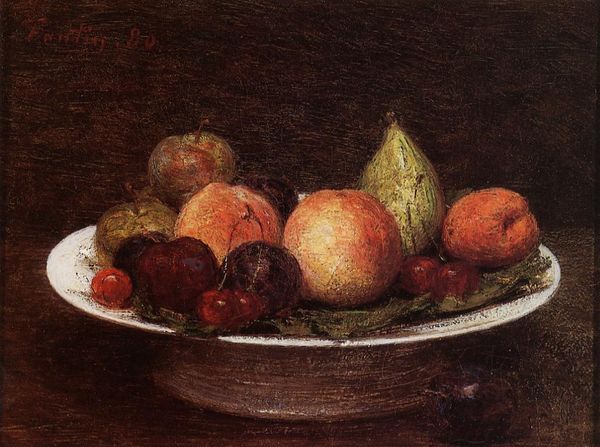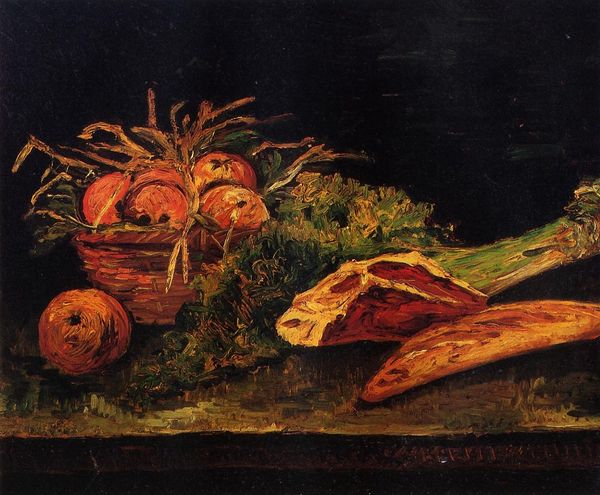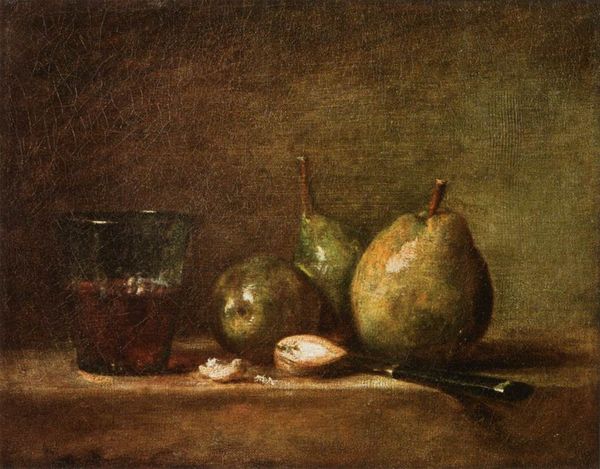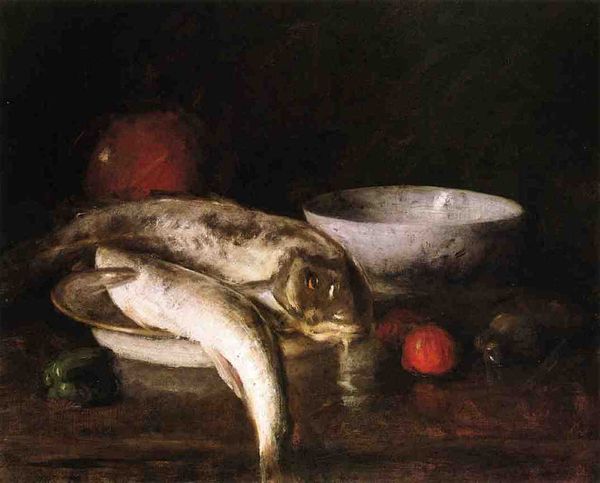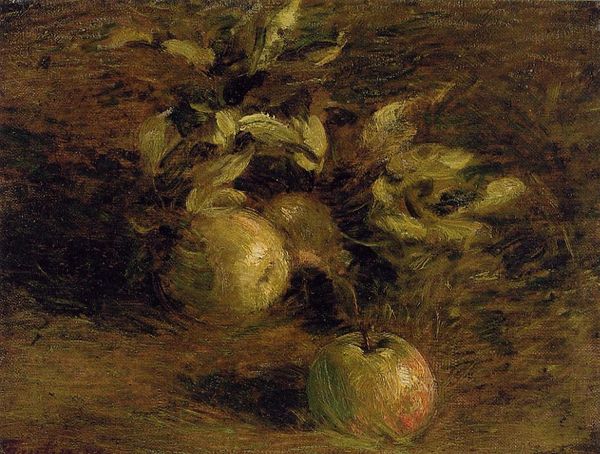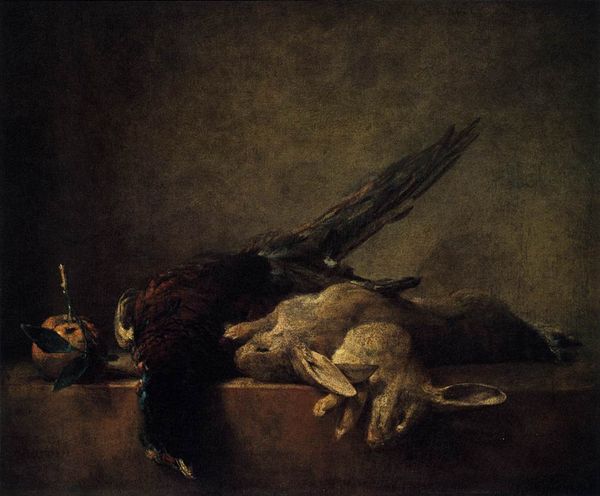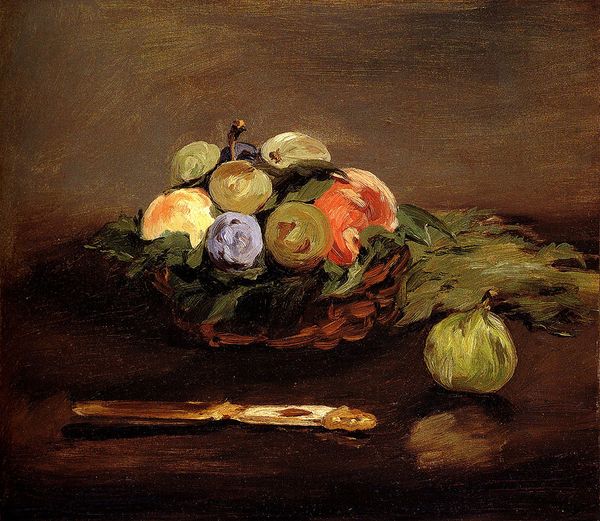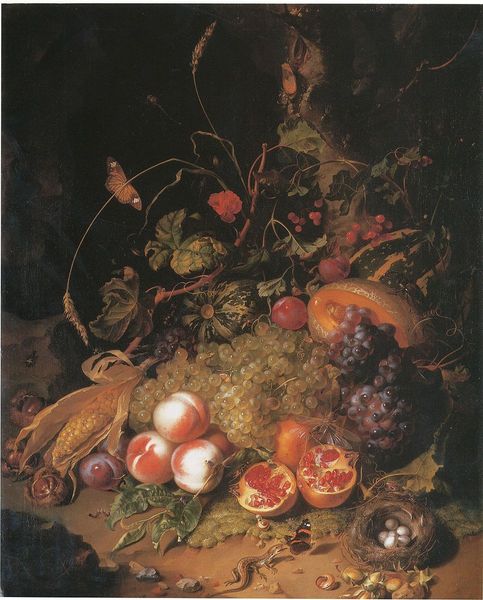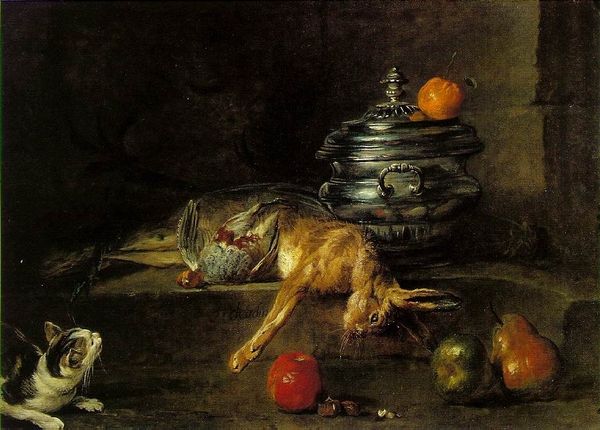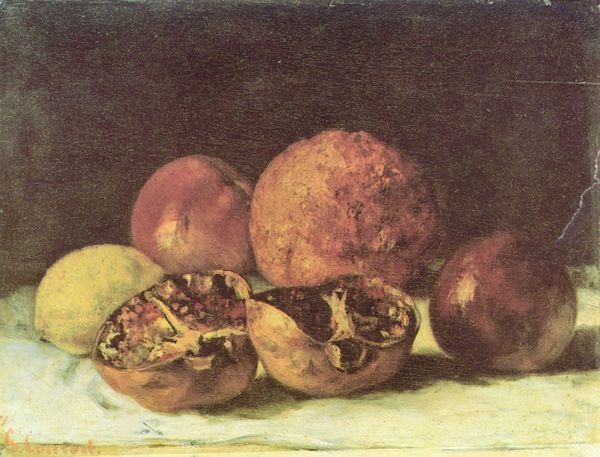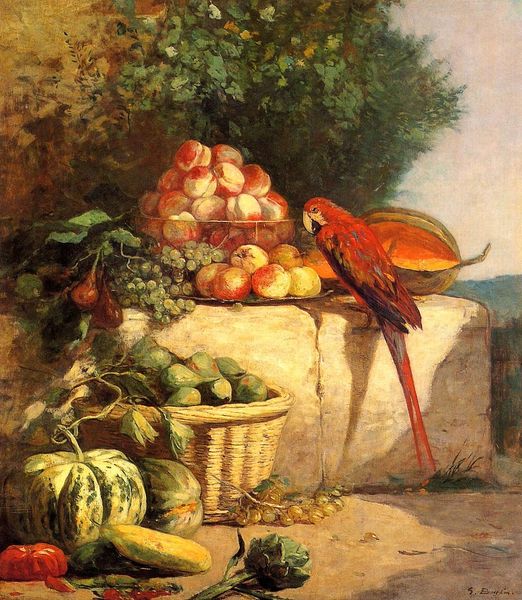
oil-paint, photography
#
still-life
#
impressionism
#
oil-paint
#
photography
#
oil painting
Copyright: Public domain
Curator: Looking at this canvas, I’m struck by the somber palette and almost unsettling stillness. What’s your initial read? Editor: I sense a heavy reliance on tradition in this arrangement. In front of us is Eugène Boudin's "Pheasant, Duck and Fruit," painted in 1879 using oil paint. It appears, ostensibly, as a classic still life composition. But perhaps something more is at play here when thinking about tradition. Curator: Ah, interesting that you pick up on the use of tradition so strongly. I do too! When considering traditions around hunting and gathering, as a social construct in this period, one may then inquire; which domestic spaces benefit from that traditional process the most? Which bodies profit and which suffer, literally, by it? Editor: An intriguing reading. Looking through the symbolic lens, fowl have, since antiquity, represented prosperity and often a successful hunt; therefore masculinity. We observe a display of nature's bounty here, but shrouded by what seems like an awareness of its darker implication. The choice of subjects, dead game and fading fruit, presents, perhaps, not just an aesthetic contemplation of food’s inherent abundance and beauty, but also questions about waste, luxury, and privilege? Curator: Precisely. The seemingly simple act of depicting dead animals opens a dialogue about power structures and inequalities that still echo today. Boudin offers insight to these historical practices for those who can afford its aesthetic appreciation and leisurely consumption, a practice so at odds with so many in society at that time. Editor: Yes, consider the shift in meaning with cultural context; beyond a commentary on opulence, the recurring motifs can, in their assembly, acquire darker connotations – of mortality, fleeting moments and vanitas, if you will. This, perhaps, asks to think deeper about visual cultural symbols in his work. Curator: I find myself seeing a mirror reflecting back at the very social stratification the artwork intends to depict. Editor: It's remarkable how much this apparently traditional still life has stirred within me regarding symbols of time, change, and the human condition, with subtle hints in an artwork such as this one! Curator: And for me, considering what a canvas can be besides mere aesthetic or technical delight: it prompts some pretty serious, complex questions. I feel compelled to think further about societal consumption during that time period!
Comments
No comments
Be the first to comment and join the conversation on the ultimate creative platform.
